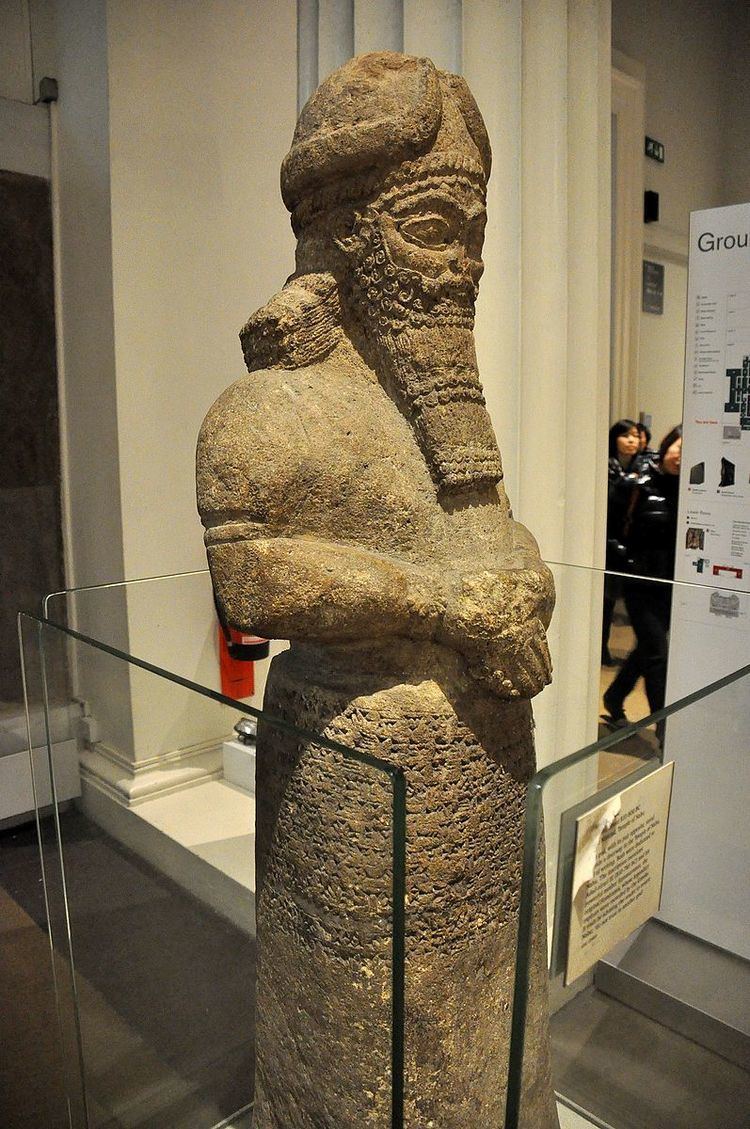 | ||
Nabu (Syriac: ܢܒܘ) is the patron god of scribes, wisdom and literature, being worshipped by the Assyrian and Babylonian people. He was identified as the son of the great god Marduk by the Babylonians and as the son of Ashur by the Assyrians.
Contents
Etymology
Nabu's name means "to call" in Akkadian language, while later cognates in Aramaic language and Hebrew language translate it as "one who has been called" or "one who can prophesy".
History
Nabu was known as Nisaba in the Sumerian pantheon, gaining prominence among the Assyrians and Babylonians in the first millennium BC following his association with Marduk. Nabu was worshipped in Babylon's sister city Borsippa, where his statue was moved to Babylon each New Year so that he could pay his respects to his father. Nabu's symbol was a stylus resting on a tablet. His wife was the Akkadian goddess Tashmet.
Nabu was also seen as the inventor of writing, an oracle, and the patron of all the rational arts. He also possessed the tablets of destiny, which fixed the length of human life. Due to his role as an oracle, Nabu was associated with the Mesopotamian moon god Sin.
Nabu wore a horned cap, and stood with his hands clasped in the ancient gesture of priesthood. He rode on a winged dragon known as Sirrush that originally belonged to his father Marduk. In Babylonian astrology, Nabu was identified with the planet Mercury.
Outside Mesopotamia
Nabu's cult spread to Egypt and Anatolia due to Aramaic settlers.
In the Bible, Nabu is mentioned as Nebo in Isaiah 46:1 and Jeremiah 48:1. In Hellenistic times, Nabu was identified with the Greek god Apollo.
As the god of wisdom and writing, Nabu was linked by the Romans with Mercury, and by the Egyptians with Thoth.
Depictions
A statue of Nabu from Calah, erected during the reign of the Assyrian king Tiglath-pileser III, is on display in the British Museum.
